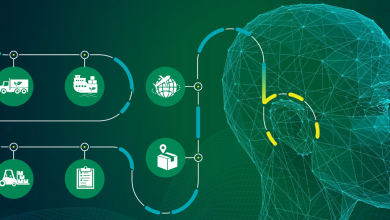
The term “efficiency” has become a bit of a buzzword among organisations in various sectors, serving both as a goal and an expectation for many. There’s no doubt that maximising available resources has the potential to help businesses operate sustainably and reach long-term success, but there are often significant changes that need to be implemented to get to this point.
In any economic climate, companies should evaluate existing operations and workflows. Even if opportunities for improvement are identified, making changes can often disrupt core processes and incite disapproval from employees. It’s no wonder that 70% of attempts for businesses to digitally transform fail, which causes an unnecessary loss of resources, time, and employee buy-in.
The reality is that innovation usually requires some form of disruption to the status quo. The only way to address operational inefficiencies and delays is by replacing old practices with new ones. The good news is that decision-makers can now rely on process intelligence tools to make data-driven decisions and automate processes based on relevant insights and information.
Using Process Intelligence
Process intelligence is a technological tool that can analyse workflow to highlight things like bottlenecks, opportunities for AI and automation, and other issues causing inefficiency.
By having this deeper understanding and enhanced perspective of operations, businesses can dramatically improve their efficiency – but only if they take the right approach.
It must be driven by insights generated through both task and process mining, using timestamps at various points throughout a timeline to generate a model that allows for easy identification of discrepancies.
Best Approach:
Task Mining and Process Mining
Process intelligence is comprised of two separate ideas: task mining and process mining. The terms “front end” and “back end” are the easiest way to understand these concepts. Process mining looks at event logs and behind-the-scenes activity throughout the bigger process, whereas task mining concentrates on employee micro-interactions such as keystrokes and mouse clicks that take place while completing tasks.
Task mining allows for steps to be standardised at the individual level, yielding more predictability and requiring less guesswork when determining how long tasks will take. Process mining can then provide more effective and reliable solutions as there is less variance at individual points in a timeline.
Process Simulation
With task and process mining, you can gain insights into past and present processes. But an additional tool known as process simulation is what allows you to scrutinise the future and create a more holistic view of operations.
Process simulation is an advanced application of process mining with predictive power, allowing decision-makers to experiment with various workflows while accounting for the wide range of variables they encounter in the scope of their operations.
Many organisations build processes around a supposed “happy path,” or a universally ideal and efficient scenario as it relates to a user experience. Unfortunately, it is rare to encounter any such one-size-fits-all solution in the complex landscapes that most businesses operate in. Thus, using process simulation to design a “primary path” contingent on various complexities allows for flexibility and the ability to adapt to specific situations.
Imagine a flight simulator. A prospective pilot can gain the experience needed to handle any situation or variable that might be encountered – barometric pressure, inclement weather, equipment failure, refueling – without the risk of experiencing it firsthand.
Process simulation is similar in its depth and complexity, allowing users to design an optimal workflow informed by as much data as possible before implementing. Instead of a pilot adjusting hypothetical wind speeds, however, an insurance provider can see how hiring additional agents might affect a claims process, or what would happen if a certain step was completed at twice its current speed. This forecasting ability enables organisations to be proactive in optimising their workflows with highly specific variables in mind.
Getting employees on board
The impact of digital transformation on the labour market has been profound, resulting in the elimination and diminishing of some jobs whilst simultaneously creating new and lucrative opportunities. However, as more tasks are automated, the word “automation” can be unsettling for employees concerned about the longevity of their roles. So it is understandable that not all employees would be enthusiastic to hear about a system that identifies inefficiencies and opportunities for automation.
Contrary to dominant thought, process intelligence isn’t about trading your human employees for robots – it aims to use human capabilities more effectively. By identifying the correct steps in a process to automate, businesses can lighten the load of repetitive and monotonous tasks that employees are assigned and instead delegate them more creative, cognitive, and rewarding projects.
This symbiosis between intelligent automation and human ingenuity improves experiences for both the business and its customers. Illustrating this mutually beneficial relationship is crucial for getting employees on board for process intelligence.
In Summary
Implementing process intelligence requires effort, and introducing change often comes with obstacles – but the data shows it is worth the effort.
According to a survey of UK organisations, 54% reported that implementing process and task mining tools improved efficiency, while 32% reported an increase in revenue. When considering ROI, 65% of surveyed companies said that process automation provided at least twice the value of their initial investment, with only 3% reporting a negative ROI.
When businesses incorporate process intelligence using the right approach, it can have a significant positive impact on efficiency, revenue, and overall experience for employees and customers. As the world continues to adopt AI and automation across different use cases, staying informed and skilled in these practices is essential. Going forward, business decision-makers need to take the right steps to keep pace with competitors, which means embracing change.




